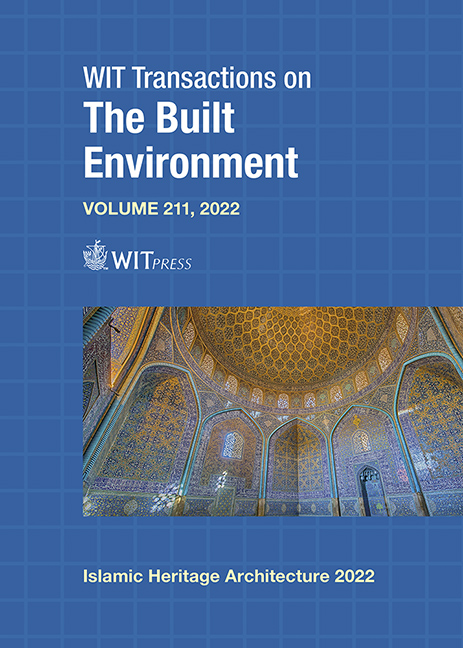RECONSTRUCTION OF ALEPPO, SYRIA: A DESIGN STUDIO AT THE UNIVERSITY OF NOTRE DAME, USA
Price
Free (open access)
Transaction
Volume
211
Pages
12
Page Range
165 - 176
Published
2022
Paper DOI
10.2495/IHA220131
Copyright
Author(s)
KATE CHAMBERS
Abstract
As we think about how to rebuild communities that have suffered destruction, it is imperative to discuss the recovery of architecture and culture. As the world of architectural education trends towards teaching the design of buildings that create “placelessness”, we must teach students to look deeply at history, to synthesize its lessons, and apply them sensitively and appropriately. Aleppo in Syria has a rich heritage of Islamic architecture that spans millennia. While the destruction of Aleppo has left a scar in the hearts of its people, it is possible to rebuild using the lessons and forms of traditional architecture. At the University of Notre Dame, our current studio of fourth year students is studying and proposing how a neighborhood in the historic city center might begin to be rebuilt. This studio is a teaching tool that allows students to engage with a culture that is foreign to them; to see and apply universal principles adapted for climate, culture, and building technologies that have been honed locally over thousands of years. The core of the studio is analysis of traditional Syrian architecture, looking at how the architecture supports the community and engages with the unique climate. The students study how traditional building technologies, like dome and vault construction, support the functions housed within these forms. They delve into the distinguished history of craft as they study architectural ornament. All these lessons are ultimately applied to a building project, which they program, conceptually develop, and design at the scales of the urban, building, and detail. These students, while they may be practicing far away from Aleppo, are preserving the heritage of a place that has seen so much destruction. Their work is a testament to the power of design in recovering the memory of a city.
Keywords
education, traditional architecture, typology, reconstruction, heritage




